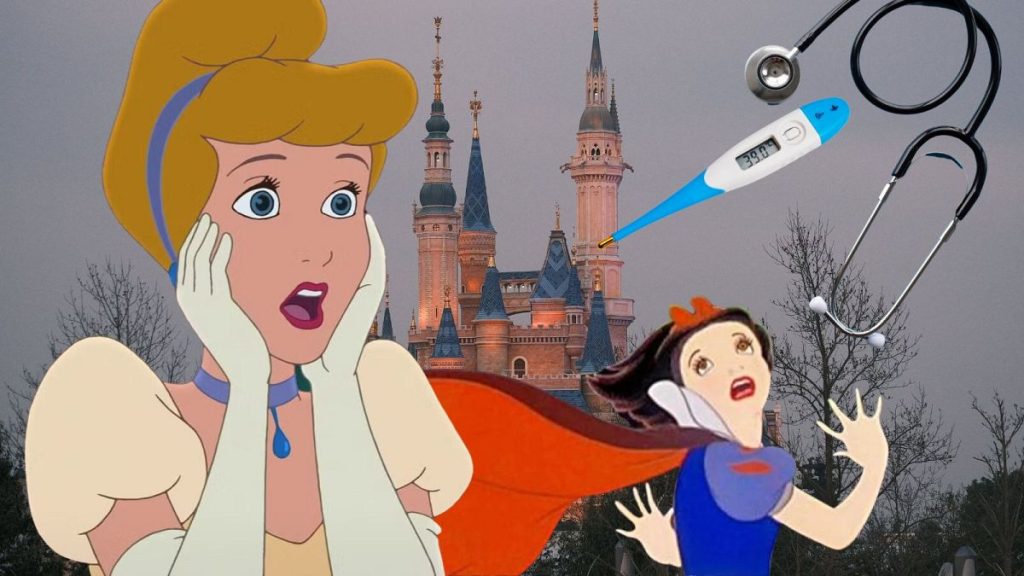Disney princesses, often viewed through the lens of fairytale romance and idealized beauty, face a myriad of health risks often overlooked amidst their happily-ever-after narratives. A satirical yet scientifically-grounded study published in the British Medical Journal’s Christmas issue highlights the potential health hazards encountered by eight iconic Disney princesses, using humor to underscore serious medical concerns while simultaneously acknowledging the limitations and evolving nature of Disney’s portrayals of female characters.
Snow White, isolated in the dwarfs’ cottage, faces risks associated with social isolation, including cardiovascular disease and mental health issues. While the dwarfs provide some companionship, her near-fatal encounter with a poisoned apple remains a stark reminder of her vulnerability. Aurora, the Sleeping Beauty, faces the dangers of prolonged bed rest, potentially leading to pressure ulcers, muscle atrophy, and cardiovascular problems, not to mention the problematic implications of non-consensual awakening by a “true love’s kiss.” Cinderella, subjected to constant housework in a dusty environment, is at risk of developing occupational lung disease, further exacerbated by exposure to the “aluminium coated microplastics” of her fairy godmother’s magical glitter.
Belle, imprisoned by the Beast, faces potential exposure to zoonotic diseases like rabies and brucellosis due to close contact with the chimeric creature. Jasmine, restricted by her royal status, also experiences social isolation, similar to Snow White, while her pet tiger Rajah, though beloved, presents risks of zoonotic infections and potential physical injuries. Pocahontas, a thrill-seeker known for her daring cliff dive, puts herself at risk of severe injuries, particularly to the clavicle, due to the impact of the fall from a considerable height.
Mulan, celebrated for her bravery, experiences intense societal and familial pressure, leading to potential mental health challenges stemming from honor-based violence and the expectation to conform to traditional gender roles. Rapunzel, imprisoned for years and forced to use her extraordinarily long hair for various purposes, risks traction alopecia due to the constant pulling and strain on her hair follicles, potentially causing permanent hair loss and chronic scalp pain.
These humorous yet grounded analyses highlight the potential health consequences faced by Disney princesses, prompting a call for greater awareness of the less glamorous realities that might exist behind the fairytale facades. The researchers suggest that addressing these health concerns through measures like therapy, animal handling training, and protection against toxic particles could contribute to a more realistic and health-conscious portrayal of these iconic characters. The study, while satirical, serves as a reminder to look beyond the romanticized narratives and consider the potential physical and mental health challenges faced by these fictional figures.
The study underscores the importance of looking beyond the surface-level narratives of Disney princesses. While the princesses’ stories are often fantastical, the researchers use real-world medical knowledge to analyze the potential health ramifications of their experiences. The study also subtly touches upon the evolution of Disney princesses, acknowledging the shift towards more independent and empowered characters like Mulan, Brave’s Merida, and Frozen’s Elsa and Anna, while still recognizing the limitations of earlier portrayals.
By examining these health risks through a scientific lens, the researchers encourage a more nuanced understanding of the princesses’ experiences. While intended to be humorous, the study subtly raises awareness about various health issues, from the dangers of social isolation and prolonged bed rest to the risks of occupational hazards and zoonotic diseases. This approach allows the researchers to engage with a popular cultural phenomenon while simultaneously disseminating information about important health topics.
The researchers also indirectly address the criticism often directed at Disney princesses for perpetuating unrealistic beauty standards and promoting passive female roles. By highlighting the potential health consequences of their experiences, the study suggests that these idealized portrayals can obscure the very real challenges faced by women, both fictional and real. The humorous tone of the study allows for a lighthearted approach to these potentially sensitive topics, making the information more accessible and engaging for a wider audience.
The researchers’ concluding recommendation for Disney to incorporate health-conscious measures into future narratives suggests a proactive approach to promoting healthier representations of female characters. By incorporating training on living with animals, personal protection against toxic particles, and mental health support, Disney could potentially create more well-rounded and realistic portrayals of its princesses, ultimately contributing to a more positive and empowering message for young viewers.
In essence, this satirical study utilizes humor and scientific grounding to explore the potential health risks faced by Disney princesses, highlighting the importance of looking beyond the fairytale facade and considering the potential consequences of their experiences. The study encourages a more nuanced understanding of these iconic characters, promoting awareness of various health issues and suggesting a path towards more realistic and health-conscious portrayals in future Disney narratives.














